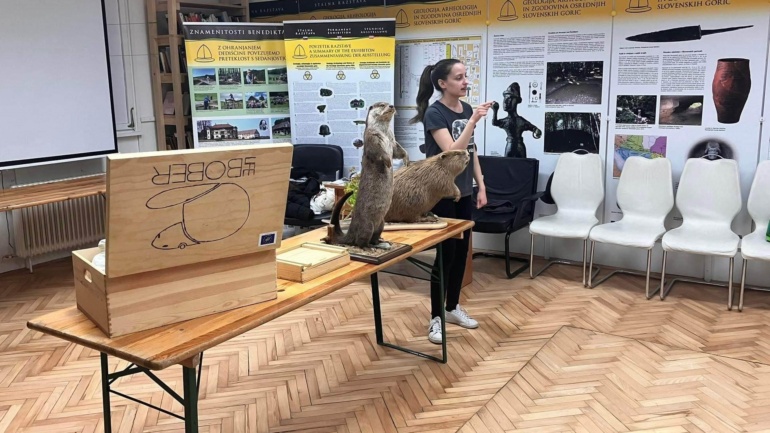We have been receiving worrisome information from different parts of Slovenia – namely, people are trying to protect the trees from being gnawed by beavers by hammering long nails into the gnawed tree bark. We do not know the exact reason behind this action, but we need to emphasize that beaver is a protected species. This action is illegal and from obvious reasons, immoral. Beavers are protected by Slovenian as well as European legislation (e.g. Slovenian Decree on Protected Wild Animal Species).
On the other hand, we also understand that people are worried about their favourite or even domestic trees (orchards) being gnawed by beavers. Beavers in Slovenia went extinct in the 18th century and therefore we Slovenians have lost touch with this animal and its environmental engineering capabilities. Beaver is a key species of the wetland ecosystems and as such provides numerous ecosystem services for people. Therefore, we will need to get used to cohabit with it again and realise its long-term benefits on the environment and nature. You can read about its long-term effects on the whole of the ecosystem HERE.
Here, we present few suggestions on how to protect selected trees legally and more effectively from beaver activity. It is possible to enfold the trees with a wired mesh, but it is crucial to:
– protect roots of trees as well as bark
– a mesh needs to be thick enough (at least 2 mm) and distanced from the bark at least 10 cm.
– a mesh needs to be at least 1 m high, but we also need to consider winter conditions and how much higher the net needs to be during the snow cover.
In the area, where beaver activity is low, we can also use chicken or rabbit wire, which is of a thinner material, with size 2,5 cm and 1,25 cm. Unfortunately, these types of nets do not have longevity. We also need to know that beavers can pull thinner nets down, therefore, they need to be at least 2 mm thick, preferably more. Suggested size of the mesh is 2,5 cm x 5 cm.




